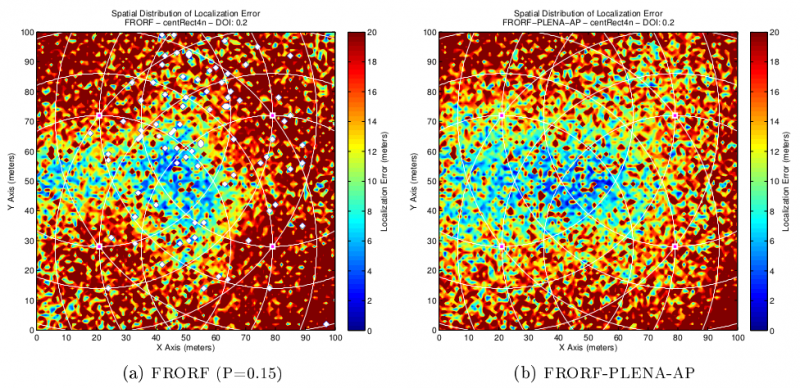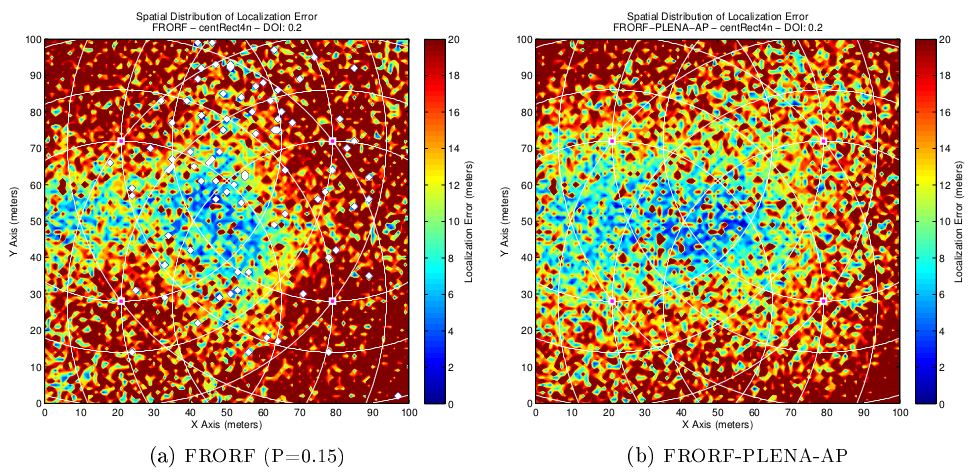Wireless Sensor Networks (WSNs), formed by low-cost, small size, and low power consumption nodes, have a growing presence around us monitoring a wide range of parameters. In most cases the acquired data must be geo-tagged to provide meaningful information. However, Global Navigation Satellite Systems (GNSS) is not a feasible solution for these networks because of its impact on the nodes’ features previously seen. Besides, in many situations, the application features and the deployment method make it impossible to pre-program the nodes’ location. Hence, it raises the paradigm of localization in WSNs and the need of finding suitable methods for identifying the nodes’ position.
The goal of this work is to implement and evaluate an absolute localization algorithm for WSNs that can be used both in simulation and in real deployment scenarios. The implemented procedure establishes a series of proximity relationships, based on RSSI values, between the sensor nodes of the network and a group of anchor nodes that are aware of their own positions. Then, applying the fuzzy set theory to the extracted information, the algorithm is able to estimate the position of the sensor nodes without any previous characterization of the environment, even in the presence of radio irregularities. This algorithm is deeply analyzed through simulations to evaluate its performance and the effect of its variables on the results. Several self-configuration approaches based on the cognitive radio paradigm are proposed, optimizing its capabilities to the characteristics of the environment.
The execution of this Action Plan has led to the successful implementation of a localization algorithm for WSNs, which will serve as a tool for further research and related work on this field. It can be highlighted as the most significant result the reduction of the average localization error in a 100-meter long square area between 5% and 12.5%, because of the proposed self-configuration approaches. Thus, the nodes’ location are estimated with an accuracy of 4 meters under isotropic conditions (DOI=0), up to 7 meters for moderately irregular radio propagation conditions (DOI=0,1), and up to 10 meters when such irregularities are very significant (DOI=0,2).


